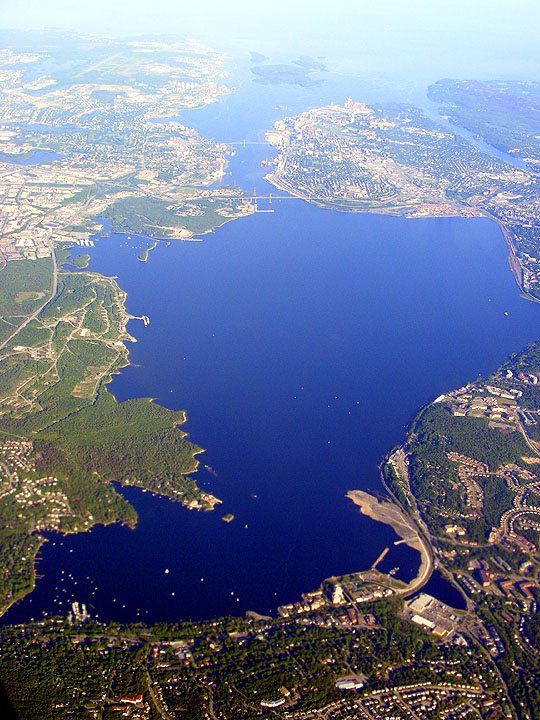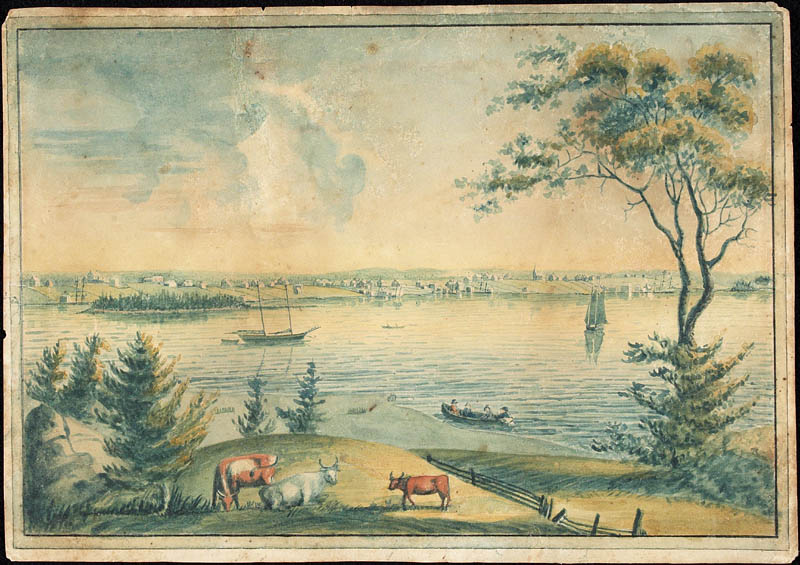|
Veith House
Veith House is an organization whose mission is to meet the needs of children, individuals and families, with empowerment as an ever-present goal. It is located at 3115 Veith St in the North End of the Halifax Regional Municipality, Nova Scotia, Canada. It is just down the hill from one of Halifax's landmarks, The Hydrostone. History Veith House's history dates back to the 1800s. The Halifax Protestant Orphanage (also known as the Protestant Orphan's Home) was in existence from 1857 to 1969. The orphanage was founded by Reverend Robert Fitzgerald Uniacke (rector of St. George Church) in 1857 and was previously located on North Park Street. This became home to a countless number of children, both girls and boys. Among those who worked there as staff during the 1890s was matron Lucy Anne Rogers Butler, an educator and social worker who had spent her early 30s documenting her 1870s travel experiences with her sea captain husband.Laidlaw, Toni Ann"Rogers, Lucy Anne Harrington" in ''D ... [...More Info...] [...Related Items...] OR: [Wikipedia] [Google] [Baidu] |
Halifax Regional Municipality
Halifax is the capital and largest municipality of the Provinces and territories of Canada, Canadian province of Nova Scotia, and the largest municipality in Atlantic Canada. As of the 2021 Census, the municipal population was 439,819, with 348,634 people in its urban area. The regional municipality consists of four former municipalities that were Amalgamation (politics), amalgamated in 1996: History of Halifax (former city), Halifax, Dartmouth, Nova Scotia, Dartmouth, Bedford, Nova Scotia, Bedford, and Halifax County, Nova Scotia, Halifax County. Halifax is a major economic centre in Atlantic Canada, with a large concentration of government services and private sector companies. Major employers and economic generators include the Canadian Armed Forces, Department of National Defence, Dalhousie University, Nova Scotia Health Authority, Saint Mary's University (Halifax), Saint Mary's University, the Halifax Shipyard, various levels of government, and the Port of Halifax. Agricult ... [...More Info...] [...Related Items...] OR: [Wikipedia] [Google] [Baidu] |
Halifax Peninsula
The Halifax Peninsula is peninsula within the urban area of the Municipality of Halifax, Nova Scotia. History The town of Halifax was founded by the British government under the direction of the Board of Trade and Plantations under the command of Governor Edward Cornwallis in 1749. The founding of the town sparked Father Le Loutre's War. The original settlement was clustered in the southeastern part of the peninsula along The Narrows, between a series of forts (Fort Needham to the north, Fort George (Citadel Hill) in the middle, and Fort Massey to the south) and the harbour. With time, the settlement expanded beyond its walls and gradually encroached over the entire peninsula, creating residential neighbourhoods defined by the peninsula's geography. From 1749 until 1841, Halifax was a town. After a protracted struggle between residents and the Executive Council, the town was incorporated into a city in 1841. From 1841 until 1969, the entire Peninsula was home to the forme ... [...More Info...] [...Related Items...] OR: [Wikipedia] [Google] [Baidu] |
List Of Communities In Nova Scotia
This is a list of communities in the Canadian province of Nova Scotia, as designated by thUnion of Nova Scotia Municipalities For the purposes of this list, a community is defined as an unincorporated settlement inside or outside a municipality. Regional municipalities Nova Scotia has four regional municipalities. Towns Nova Scotia has 27 towns. Municipal districts Nova Scotia has 12 municipal districts. Villages Nova Scotia has 21 villages. Other communities A * Abbots Dyke * Acaciaville * Acacia Valley *Advocate Harbour * Africville * Afton *Aldershot * Argyle Sound *Arichat *Arisaig * Arlington *Aspen *Atlanta *Atlantic * Atwoods Brook * Aylesford * Auburn B * Baccaro * Bald Rock * Bangor * Barrachois (Cape Breton County) * Barrachois (Colchester County) * Barrington *Barrington Passage * Barrington West * Bass River * Baxters Harbour * Bayport * Bayside * Bay St. Lawrence * Bear Cove (Digby) * Bear Cove (Halifax) * Bear Point * Bear River *Beaver Da ... [...More Info...] [...Related Items...] OR: [Wikipedia] [Google] [Baidu] |
North End, Halifax
The North End of Halifax is a neighbourhood of Halifax, Nova Scotia occupying the northern part of Halifax Peninsula immediately north of Downtown Halifax. History Prior to European colonization, the Mi'kmaq inhabited the land throughout Atlantic Canada and Northern Maine. The North End of Halifax began as an agricultural expansion north from central Halifax as African American and German Foreign Protestant settlers arrived in the province. It became the focus of industry in Halifax with the construction of the Nova Scotia Railway in the 1850s which located its terminal in the North End. Factories such as the Nova Scotia Cotton Manufacturing Company, Hillis & Sons Foundry, and the Acadia Sugar Refinery, made the North End the focus of manufacturing in Halifax. Railway growth intensified with the extension of railways further into the North End and construction of the North Street Station in 1878, the largest station east of Montreal. Wharves warehouses lined the waterfront, ... [...More Info...] [...Related Items...] OR: [Wikipedia] [Google] [Baidu] |
Nova Scotia
Nova Scotia ( ; ; ) is one of the thirteen provinces and territories of Canada. It is one of the three Maritime provinces and one of the four Atlantic provinces. Nova Scotia is Latin for "New Scotland". Most of the population are native English-speakers, and the province's population is 969,383 according to the 2021 Census. It is the most populous of Canada's Atlantic provinces. It is the country's second-most densely populated province and second-smallest province by area, both after Prince Edward Island. Its area of includes Cape Breton Island and 3,800 other coastal islands. The Nova Scotia peninsula is connected to the rest of North America by the Isthmus of Chignecto, on which the province's land border with New Brunswick is located. The province borders the Bay of Fundy and Gulf of Maine to the west and the Atlantic Ocean to the south and east, and is separated from Prince Edward Island and the island of Newfoundland by the Northumberland and Cabot straits, ... [...More Info...] [...Related Items...] OR: [Wikipedia] [Google] [Baidu] |
Canada
Canada is a country in North America. Its ten provinces and three territories extend from the Atlantic Ocean to the Pacific Ocean and northward into the Arctic Ocean, covering over , making it the world's second-largest country by total area. Its southern and western border with the United States, stretching , is the world's longest binational land border. Canada's capital is Ottawa, and its three largest metropolitan areas are Toronto, Montreal, and Vancouver. Indigenous peoples have continuously inhabited what is now Canada for thousands of years. Beginning in the 16th century, British and French expeditions explored and later settled along the Atlantic coast. As a consequence of various armed conflicts, France ceded nearly all of its colonies in North America in 1763. In 1867, with the union of three British North American colonies through Confederation, Canada was formed as a federal dominion of four provinces. This began an accretion of provinces an ... [...More Info...] [...Related Items...] OR: [Wikipedia] [Google] [Baidu] |
The Hydrostone
Hydrostone is a neighbourhood in the North End of the Halifax Peninsula in the Halifax Regional Municipality, Nova Scotia, Canada. It consists of ten short parallel streets and is bordered by Duffus Street to the north, Young Street to the south, Isleville Street to the west and Novalea Drive to the east. The Hydrostone District has about of landmass. The neighbourhood was designed by architect Thomas Adams to provide housing for working-class families displaced by the Halifax Explosion in 1917. Architectural design was by George Ross of the Montreal architectural firm of Ross and Macdonald. The neighbourhood draws its name from the special cinderblocks from which the houses were constructed. Most of the dwellings are row-houses in groups of four and six, except for the large, two-storey single-family houses at the eastern end of each street. Some have been converted to sets of flats. All of the streets in the Hydrostone are boulevards except Stanley Place. These boulevards h ... [...More Info...] [...Related Items...] OR: [Wikipedia] [Google] [Baidu] |
Lucy Anne Rogers Butler
Lucy Anne Rogers Butler (born Lucy Anne Harrington Rogers; March 24, 1841 – January 25, 1906), also known as Annie Rogers Butler, was a writer and social justice advocate. Her personal diary, which chronicled her travels with Captain John Kendrick Butler during the early years of their marriage, documents the lifestyle of Canadian mariners and their wives and widows during the mid to late 19th century.Laidlaw, Toni Ann in ''Dictionary of Canadian Biography'', vol. 13. Toronto, Canada: University of Toronto/Université Laval. Accessed May 1, 2018. Formative years Born in Yarmouth County, Nova Scotia, Canada on March 24, 1841, Lucy Anne Harrington Rogers was known to family and friends as "Annie", and was the eighth child of Elsie (Knowles) Rogers (1808-1849) and Benjamin Rogers (1801-1884), a shipbuilder in Yarmouth County, Nova Scotia. Reared in a household which adhered to "the strict discipline of the Wesleyan Methodist tradition," and "well educated" in comparison to the ... [...More Info...] [...Related Items...] OR: [Wikipedia] [Google] [Baidu] |
Halifax Explosion
On the morning of 6 December 1917, the French cargo ship collided with the Norwegian vessel in the waters of Halifax, Nova Scotia, Canada. The ''Mont-Blanc'', laden with high explosives, caught fire and exploded, devastating the Richmond district of Halifax. 1,782 people were killed, largely in Halifax and Dartmouth, by the blast, debris, fires, or collapsed buildings, and an estimated 9,000 others were injured. The blast was the largest human-made explosion at the time, releasing the equivalent energy of roughly . ''Mont-Blanc'' was under orders from the French government to carry her cargo from New York City via Halifax to Bordeaux, France. At roughly 8:45 am, she collided at low speed, approximately one knot (), with the unladen ''Imo'', chartered by the Commission for Relief in Belgium to pick up a cargo of relief supplies in New York. On the ''Mont-Blanc'', the impact damaged benzol barrels stored on deck, leaking vapours which were ignited by sparks from the ... [...More Info...] [...Related Items...] OR: [Wikipedia] [Google] [Baidu] |
Buildings And Structures In Halifax, Nova Scotia
The following is a list of buildings in the Halifax Regional Municipality, Nova Scotia Halifax is the capital and largest municipality of the Canadian province of Nova Scotia, and the largest municipality in Atlantic Canada. As of the 2021 Census, the municipal population was 439,819, with 348,634 people in its urban area. The re ... with articles on Wikipedia. References {{Halifax Regional Municipality ... [...More Info...] [...Related Items...] OR: [Wikipedia] [Google] [Baidu] |






